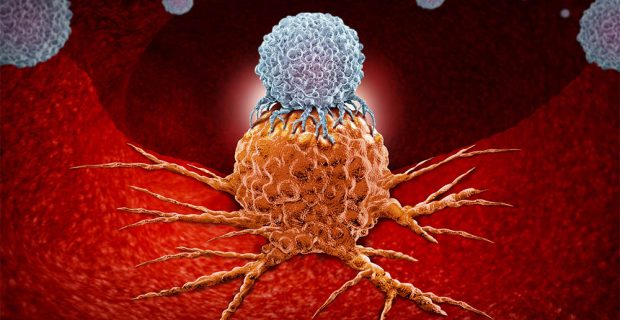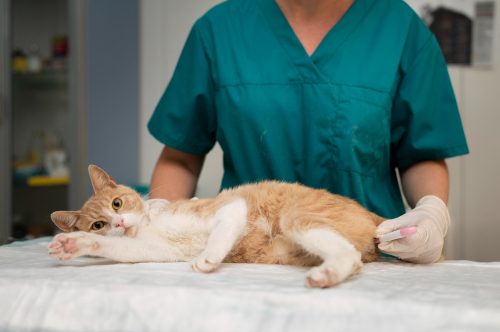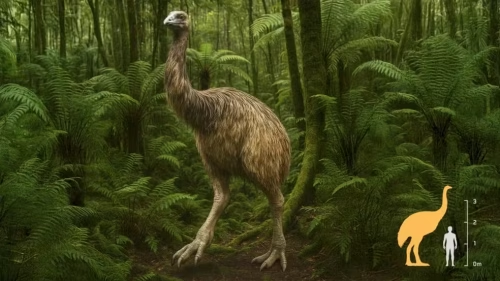Profissionais comentam uso do inibidor de receptores de tirosina-quinase
Sabe-se, há muitos anos, que o sistema imunológico desempenha um papel fundamental no desenvolvimento e no controle dos processos neoplásicos em humanos e animais. Ao longo da história, existem numerosos registros, desde o Egito antigo até o início do século XVIII, na Europa, sobre a remissão de tumores após um episódio infeccioso ou febril. No entanto, os primeiros relatos científicos sobre as tentativas de modulação do sistema imunológico para combate ao câncer só ocorreram na segunda metade do século XVIII, quando a confirmação histológica das características de malignidade das neoformações tornou-se possível.
Há mais de 135 anos, os médicos alemães Karl David Wilhelm Busch e Friedrich Fehleisen publicaram, de maneira independente, trabalhos sobre a regressão de neoplasias em pacientes com câncer após infecções acidentais por erisipela. Em 1868, Busch foi o primeiro pesquisador a infectar intencionalmente com erisipela um paciente oncológico, observando, após o experimento, a citorredução da massa tumoral.
Fehleisen repetiu esse tratamento em 1882, com a identificação do Streptococcus pyogenes como o agente causador da erisipela. Em 1891, o cirurgião americano William Bradley Coley, do Serviço de Neoplasias Ósseas do Memorial Hospital em Nova York, observou a remissão de um sarcoma infectado por Streptococcus pyogenes, iniciando um projeto de 43 anos que envolveu a injeção de bactérias inativadas por calor, conhecidas como “toxinas de Coley”, em pacientes com tumores inoperáveis.
Para ler o artigo completo, acesso a revista a edição de dezembro da C&G VF. Clique aqui.
Abaixo, a bibliografia utilizada pelos autores:
BURTON, J. H.; MITCHELL, L.; THAMM, D. H.; DOW, S. W.; BILLER, B. J. Low-dose cyclophosphamide selectively decreases regulatory T cells and inhibits angiogenesis in dogs with soft tissue sarcoma. Journal of Veterinary Internal Medicine, v. 25, n. 4, p. 920-926, 2011.
BUSCH, W. Aus der sitzung der medicinischen section von 13 november 1867. Berlin Klinische Wochenschrift, v. 5, p. 137, 1868.
CHIDA, K.; NAKANISHI, K.; SHOMURA, H.; HOMMA, S.; HATTORI, A.; KAZUI, K.; TAKETOMI, A. Spontaneous regression of transverse colon cancer: a case report. Surgical Case Reports, v. 3, n. 65, 2017.
COLEY, W. B. Contribution to the knowledge of sarcoma. Annals of Surgery, v. 14, p. 199-220, 1891.
DOW, S.; GUTH, A. M. Cancer immunotherapy. In: VAIL, D. M.; THAMM, D.; LIPTAK, J. Withrow and MacEwen’s Small Animal Clinical Oncology. 6. ed. Philadelphia: W.B. Saunders, 2019. p. 198-214.
DUNN, G. P.; OLD, L. J.; SCHREIBER, R. D. The three Es of cancer immunoediting. Annual Review of Immunology, v. 22, p. 329-360, 2004.
ELLIOTT, J. New drug therapies for treating cancer in dogs and cats. In Practice, v. 39, p. 2-9, 2017.
FEHLEISEN, F. Ueber die züchtung der erysipel kokken auf künstlichem nährboden und ihre ubertragbarkeit auf den menschen. Deutsche Medizinische Wochenschrift, v. 8, p. 553-554, 1882.
HOLTERMANN, N.; KIUPEL, M.; HIRSCHBERGER, J. The tyrosine kinase inhibitor toceranib in feline injection site sarcoma: efficacy and side effects. Veterinary and Comparative Oncology, v. 15, n. 2, p. 632-640, 2017.
KUCEROVA, P.; CERVINKOVA, M. Spontaneous regression of tumour and the role of microbial infection – possibilities for cancer treatment. Anticancer Drugs, v. 27, n. 4, p. 269-277, 2016.
KWILAS, A.R.; DONAHUE, R. N.; TSANG, K. Y.; HODGE, J. W. Immune consequences of tyrosine kinase inhibitors that synergize with cancer immunotherapy. Cancer Cell and Microenvironment, v. 2, p. 1-17, 2015.
LEMMON, M. A.; SCHLESSINGER, J. Cell signaling by receptor tyrosine kinases. Cell, v. 141, n. 7, p. 1117-1134, 2010.
LONDON, C. A. et al. Multi-center, placebo-controlled, double-blind, randomized study of oral toceranib phosphate (SU11654), a receptor tyrosine kinase inhibitor, for the treatment of dogs with recurrent (either local or distant) mast cell tumor following surgical excision. Clinical Cancer Research, v. 15, n. 11, p. 3856-3865, 2009.
LONDON, C. et al. Preliminary evidence for biologic activity of toceranib phosphate (Palladia®) in solid tumours. Veterinary and Comparative Oncology, v. 10, n. 3, p. 194-205, 2011.
MCCARTHY, E. F. The toxins of William B. Coley and the treatment of bone and soft-tissue sarcomas. The Iowa Orthopedic Journal, v. 26, p. 154-158, 2006.
MITCHELL, L.; THAMM, D. H.; BILLER, B. J. Clinical and immunomodulatory effects of toceranib combined with low-dose cyclophosphamide in dogs with cancer. Journal of Veterinary Internal Medicine, v. 26, n. 2, p. 355-362, 2012.
OELSCHLAEGER, T. A. Bacteria as tumor therapeutics? Bioengineered Bugs, v.1, p. 146-147, 2010.
SHARMA, A; CAMPBELL, M.; YEE, C.; GOSWAMI, S.; SHARMA, P. Immunotherapy of cancer. In: RICH, R. R.; FLEISHER, T. A.; SHEARER, W. T.; SCHROEDER, H. W.; FREW, A. J.; WEYAND, C. M. Clinical Immunology: Principles and Practice. 5. ed. New York: Elsevier, 2018. p. 1033-1048.
VETERINARY COOPERATIVE ONCOLOGY GROUP. Common terminology criteria for adverse events (VCOG-CTCAE) following chemotherapy or biological antineoplastic therapy in dogs and cats v1.1. Veterinary and Comparative Oncology, v. 14, n. 4, p. 417-446, 2011.
YANCEY, M. F. et al. Distribution, metabolism, and excretion of toceranib phosphate (Palladia, SU11654), a novel tyrosine kinase inhibitor, in dogs. Journal of Veterinary Pharmacology and Therapeutics, v. 33, n. 2, p. 154-161, 2010.
Fonte: Redação Cães&Gatos VET FOOD.









